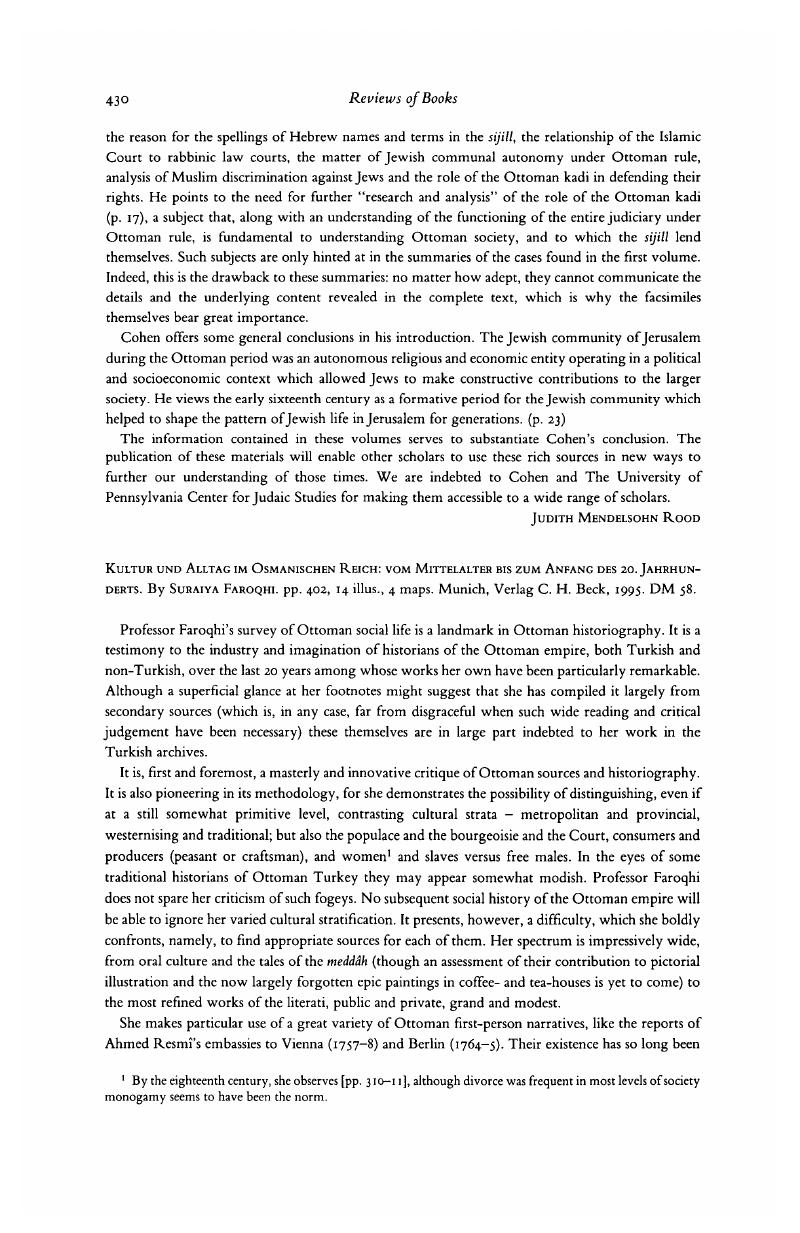No CrossRef data available.
Published online by Cambridge University Press: 24 September 2009

1 By the eighteenth century, she observes [pp. 310–11], although divorce was frequent in most levels of society monogamy seems to have been the norm.
2 This explains among other things why, although the weight of the evidence points, as Kreutel, Richard F. argues in his Im Reich des Goldenen Apfels. Des türkischen Weltenbummler Evliyâ Çelebi's denkwürdige Reise in das Giaurenland und in die Stadt und Festung Wien anno 1665 (Graz, Vienna, Cologne, 1957),Google Scholar to his participation in the Ottoman embassy of 1665 to the Emperor Leopold I, the suspicion that he never went to Vienna is certainly not unreasonable.
3 Ibid., pp. 21–7
4 Ibid., p. 116.
5 DankofF, Robert, Evliya Çelebi in Bitlis (Leiden, 1990), pp. 144–5.Google Scholar Baldnghan (Redhouse, asafoetida), an alternative reading, would have made a noticeably un-enticing drink.
6 Christianity and Islam under the Sultans, ii, (Oxford, 1929), pp. 483–93.Google Scholar
7 Kreutel, , op. cit., p. 66.Google Scholar We should, perhaps, be more agnostic regarding the snails and the tortoises also in the list.
8 Though Professor Faroqhi does not mention Edward Webbe the master-gunner formerly in Queen Elizabeth I's service, who was responsible for the fireworks at the Sur-i Humayun of 1582, she does note their strongly Western appearance, which further reinforces the common features of these great Ottoman spectacles with their European counterparts.
9 Topkapi Saray Library H. 1426; cf. Gökyay, Orhan şaik, “Sohbetnâme”, reprinted in id., Eski, yeni ve öjtesi, (Istanbul, 1995), PP. 275–307.Google Scholar
10 (p. 31) “Eine jede Kultur, und natürlich auch die osmanische, legt den in ihre lebenden Menschen Verhaltensweise nahe, denen sie sich nur schwer entziehen können. Aber das bedeudet noch nicht, daß diese Menschen gezwungen sind, ausschließlich nach vorgegebenen Stereotypen zu verhalten, daß sie keinerlei Optionen haben. Ich gehe vielmehr von der Annahme aus, daß auch ganz gewöhnliche Menschen von Fall zu Fall aus den Elementen, die ihnen von ihrer Kultur vorgeben waren, neuartige Lösungen komponierten.”
11 For example, France, 1848–1945 (Oxford, 1977 and later editionsGoogle Scholar